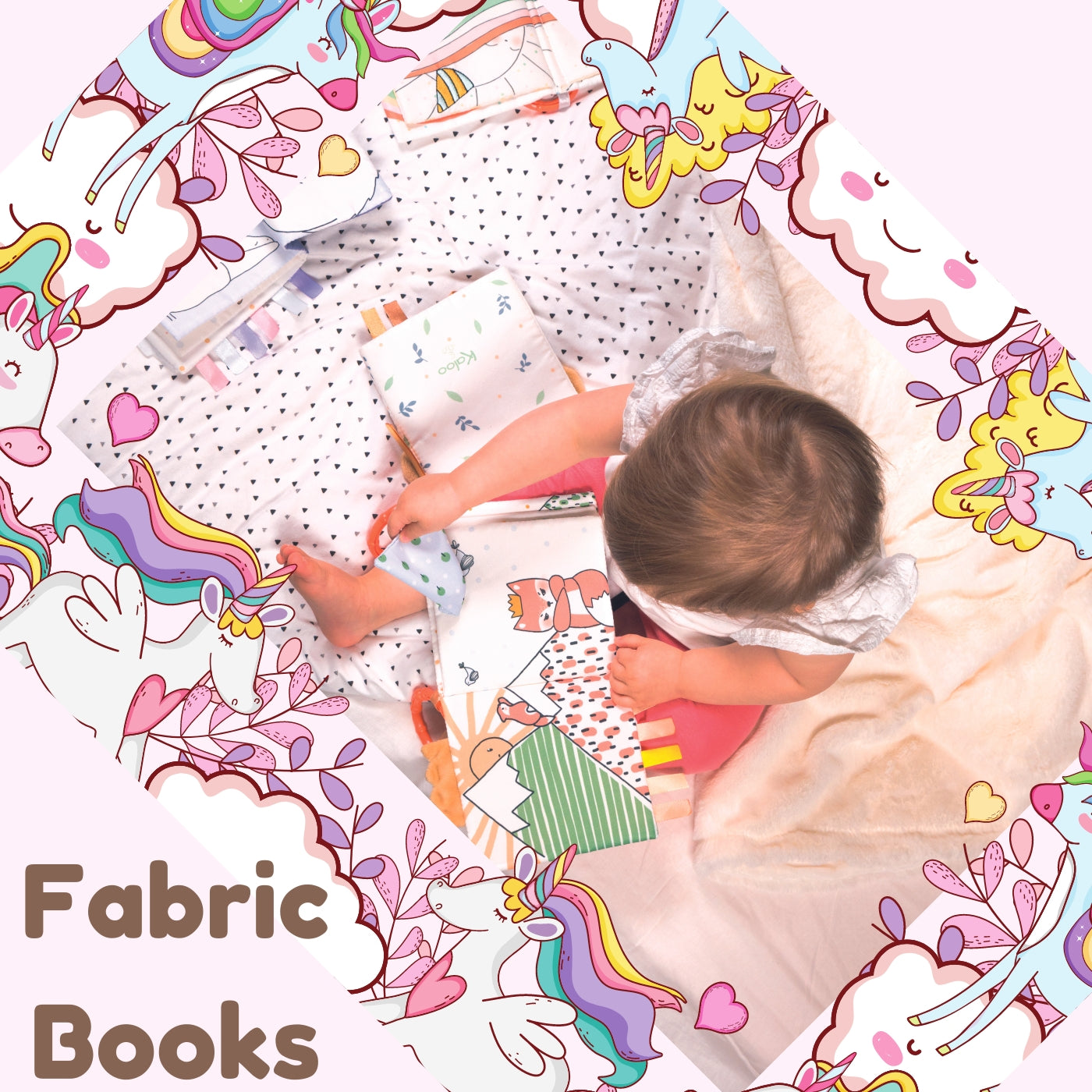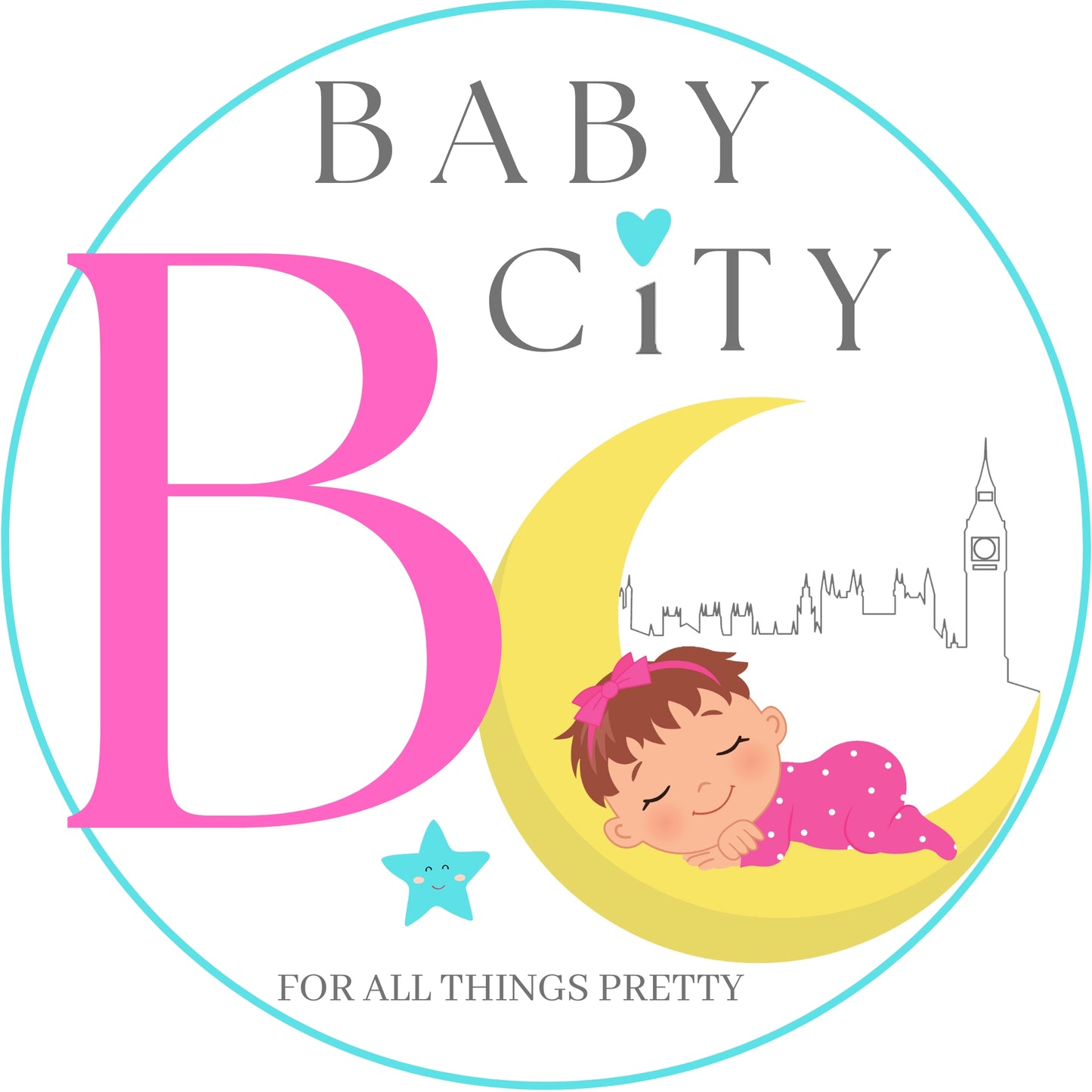
Reading is an essential part of a child's development, and introducing them to books as early as possible is crucial. But with so many options available, it can be daunting to choose the perfect book for your little one. However, fabric books are a great option for infants and toddlers as their first book. These soft, colorful, and interactive books are not only fun to look at and touch, but they also help to develop a child's cognitive, physical, and emotional abilities. Fabric books are designed to stimulate a child's senses while teaching them important skills such as object recognition, hand-eye coordination, fine motor skills, and language development. In this blog post, we will explore why fabric books are the ideal first book for children and the benefits they provide for early childhood development.
1. Introduction to fabric books and their benefits for children
Fabric books are a popular choice for parents and educators as a child's first introduction to reading. These books are made of soft, durable materials and often include bright colours, textures, and interactive features such as flaps and buttons. Fabric books are a safe and engaging option for infants and toddlers who are still exploring the world around them and learning through touch and play.
One of the main benefits of fabric books is their durability. Children at this age are still developing fine motor skills and may not yet fully understand how to handle delicate objects, so traditional books with paper pages can easily tear or be destroyed. Fabric books, on the other hand, are designed to withstand rough handling and can be washed if they become dirty.
Fabric books also offer a sensory experience for children. The different textures and colours can stimulate their senses and encourage exploration. Interactive features such as peek-a-boo flaps or crinkly pages can also help to develop cognitive skills and promote problem-solving.
In addition to these benefits, fabric books can also help to foster a love of reading from an early age. The soft and comfortable materials of fabric books make them a comforting and enjoyable experience for young children, which can create positive associations with reading and encourage them to continue exploring books as they grow older.
Overall, fabric books are a wonderful option for parents and educators looking for a safe and engaging introduction to reading for young children. With their durability, sensory features, and potential to foster a love of reading, they are an ideal choice for any child's first book.
2. How fabric books differ from regular paper books
Fabric books are unique in the sense that they are made out of a soft and durable material that is perfect for little hands to hold and explore. Unlike traditional paper books, fabric books are designed to be touched, felt, and interacted with. They are often filled with crinkly pages, tactile textures, and colourful designs that are sure to capture a child's attention.
One of the biggest differences between fabric books and regular paper books is their durability. Paper books can easily tear, bend or get damaged with frequent use, but fabric books are built to withstand the wear and tear of little hands. Fabric books are also a great choice for babies and toddlers who are still learning to grasp and hold objects, as they are lightweight and easy to handle.
Another key difference between fabric books and regular paper books is their washability. Fabric books can be easily cleaned and sanitized, making them a safe and hygienic choice for children. This is especially important for babies and toddlers who tend to put everything in their mouths.
Overall, fabric books offer a unique and engaging reading experience for young children. They are durable, washable, and designed to be interactive, making them the ideal first book for children.
3. Advantages of fabric books for early childhood development
Fabric books are designed to be the perfect first book for children, especially for infants and toddlers. These books offer a range of advantages that are crucial for early childhood development. Here are some of the benefits of fabric books for young children:
1. Sensory Development: Fabric books are made of different textures and materials, providing a tactile experience for the child. The child can touch and feel the different textures, which is important for sensory development.
2. Motor Skill Development: Fabric books are soft and lightweight, making them easy for little hands to hold and manipulate. This helps to develop the child's fine motor skills and hand-eye coordination.
3. Interactive Learning: Fabric books often come with interactive features such as flaps, zippers, and buttons, which encourage the child to explore and discover. This interactive learning is essential for developing the child's cognitive and problem-solving skills.
4. Language Development: Fabric books often have simple stories and rhymes that are perfect for young children. This helps to develop the child's language skills and vocabulary.
5. Durability: Fabric books are designed to withstand the wear and tear of young children. They can be washed and dried, making them easy to clean and maintain.
Overall, fabric books are the perfect first book for children, offering a range of benefits that are essential for early childhood development. They provide a fun and interactive learning experience that will help to prepare children for a lifetime of reading and learning.
4. Fabric books as sensory tools
Fabric books are incredibly versatile, and they are not just for reading! Children learn through touch and feel, and fabric books offer the perfect opportunity to engage their senses of touch and sight.
The different textures in a fabric book provide a great sensory experience for young children. They can explore the bumpy, smooth or furry surfaces of different fabrics, and this helps to stimulate their sensory development. The bright colours and patterns of fabric books also provide a visual stimulus that encourages children to engage with the book.
In addition to stimulating their senses, fabric books also help young children develop their motor skills. The pages are easy to turn, and the soft fabric pages are easy to grip, making them ideal for little hands. By turning the pages and manipulating the soft fabric, children develop the fine motor skills they need for writing, drawing, and other activities.
In summary, fabric books provide a unique sensory experience for young children, helping them to develop their motor skills, and providing hours of entertainment. They are the perfect first book for any child, and a great way to introduce them to the wonderful world of reading.
5. Fabric books as educational tools
Fabric books are not only fun but also educational for children. They are a great way to introduce basic concepts such as colors, numbers, shapes, and textures to young children. Fabric books often feature bright and colorful designs that are visually stimulating for young minds. They also incorporate different fabrics and textures, which encourage tactile exploration and sensory development.
Fabric books can also help to stimulate a child%u2019s imagination and creativity. They often feature stories that are filled with whimsy and wonder, which can help to spark a child%u2019s imagination and inspire creative play. Children can use fabric books to create their own stories, acting out scenarios with the characters or using the book as a backdrop for imaginative play.
Beyond the basic concepts, fabric books can also be used to teach children about the world around them. Many fabric books feature animals, plants, and other natural elements, which can help to teach children about the environment and the importance of conservation. They can also be used to introduce cultural concepts and diversity, helping children to understand and appreciate the differences between people and cultures.
Overall, fabric books are a wonderful educational tool for young children. They are fun, engaging, and can help to develop essential skills such as language, sensory awareness, and imagination. Whether you are a parent, teacher, or caregiver, a fabric book is a great addition to any child%u2019s learning experience.
6. Durability and safety of fabric books for young children
One of the biggest concerns for parents when it comes to buying books for their young children is durability and safety. Children tend to grab, chew and throw everything they come across, and books are no exception. That's why fabric books are the ideal choice for parents who want to invest in a book that will last.
Fabric books are made from high-quality materials that can withstand the wear and tear of young children. Unlike traditional paper books, fabric books are less prone to tearing or getting damaged. This means that your child can enjoy their favourite book over and over again without it falling apart.
In addition to being durable, fabric books are also safe for young children. Traditional paper books can have sharp edges, making them potentially dangerous for young children who are still developing their motor skills. Fabric books, on the other hand, are soft and safe for children to touch and play with.
Moreover, fabric books are printed with non-toxic ink, which makes them safe for children to put in their mouths. This is especially important for infants and toddlers who are still exploring the world around them by putting everything in their mouths.
In summary, the durability and safety of fabric books make them an ideal choice for parents who want to provide their children with a lasting and safe reading experience. Not only can children enjoy fabric books without the risk of injury, but they can also learn and grow with them in a fun and engaging way.
7. How to choose the right fabric book for your child
When choosing a fabric book for your child, there are a few things to consider to ensure you get the right one. First, consider the age of your child. Some fabric books are designed for babies and toddlers, with large, bright images and simple concepts like shapes, colors, and animals. Others are more complex and suited for older children, with more detailed images and interactive features like zippers and pockets.
Next, think about your child's interests. If they love animals, choose a fabric book with lots of animal images. If they enjoy music, look for a fabric book with sound effects or musical elements. If they're learning a new language, find a fabric book with words in that language.
It's also important to consider the durability of the fabric book. Look for books made from high-quality materials that can withstand lots of wear and tear, as children can be rough with their toys. Make sure the book is easy to clean, as it's likely to get dirty over time.
Finally, consider the educational value of the fabric book. Look for books that teach important concepts like counting, shapes, and colors. Choose books with interactive features that help develop fine motor skills and problem-solving abilities.
By considering these factors, you can choose the perfect fabric book for your child and give them a fun and educational toy they'll love for years to come.
8. Creative ways to incorporate fabric books into playtime and learning
Fabric books are a great tool to incorporate into playtime and learning for young children. They are soft, colorful, and interactive, making them a perfect sensory experience for babies and toddlers. Here are some creative ways to incorporate fabric books into playtime and learning:
1. Use them in tummy time: Tummy time is important for developing neck and shoulder muscles. Place a fabric book in front of your baby during tummy time and let them explore the different textures and colors.
2. Make up stories: Fabric books often have colorful illustrations that can help stimulate a child's imagination. Use the pictures in the books to make up stories and engage your child in conversation.
3. Roleplay: Fabric books often feature characters and objects that children can play with. Use the book as inspiration for roleplaying activities, such as pretending to cook with the food-themed book or playing dress-up with the animal-themed book.
4. Take them on the go: Fabric books are easy to pack and take on the go. They can be a great source of entertainment during long car rides or flights.
5. Use them for language development: Fabric books often feature simple words and phrases that can help with language development. Use the books as a tool to introduce new vocabulary and encourage your child to repeat the words.
Incorporating fabric books into playtime and learning can be a fun and engaging way to help young children develop important skills. With their soft, colorful designs and interactive features, fabric books are a must-have for any child's toy collection.
9. Tips for caring for and storing fabric books
Fabric books are a wonderful addition to any child's library. They are soft, durable, and can withstand a lot of wear and tear. However, to ensure that they last for a long time, it is important to take care of them properly.
Firstly, it is important to wash fabric books before they are used for the first time. This will help to remove any dirt or residue that may have accumulated during the manufacturing process. It is recommended to hand wash them in cold water and use a gentle detergent. Avoid using bleach or fabric softeners, as this can damage the material.
When it comes to storage, fabric books should be kept in a cool and dry place. Avoid exposing them to direct sunlight or high temperatures, as this can cause the colors to fade or the fabric to shrink. It is also important to keep them away from pets and young children who may be tempted to chew or play with them.
To prevent damage to the pages, it is recommended to store fabric books flat. If they need to be stacked, make sure to place a piece of cardboard or fabric between each book to prevent any rubbing or damage to the pages.
Finally, if a fabric book does become damaged, it is important to repair it as soon as possible. This will help to prevent any further damage and ensure that the book can be enjoyed for many years to come.
By following these tips for caring for and storing fabric books, you can ensure that they remain in great condition and continue to be a favorite among children for many years to come.
10. Conclusion and recommendation for fabric books as an ideal first book for children
In conclusion, fabric books are the perfect first book for children. They provide a sensory experience that helps babies and young children to learn and explore the world around them. Fabric books are safe, durable, and easy for little hands to handle, making them an ideal choice for parents and caregivers.
By incorporating different textures, colors, and sounds, fabric books help to stimulate a child's senses and encourage their curiosity. They are also machine washable, which means they can withstand the wear and tear of daily use and be used by multiple children.
Overall, fabric books are a fantastic investment for parents looking to introduce their children to the world of reading. They provide a fun and engaging way for children to learn, explore, and develop their cognitive abilities. So, if you are looking for the perfect first book for your child, we highly recommend investing in a fabric book.

